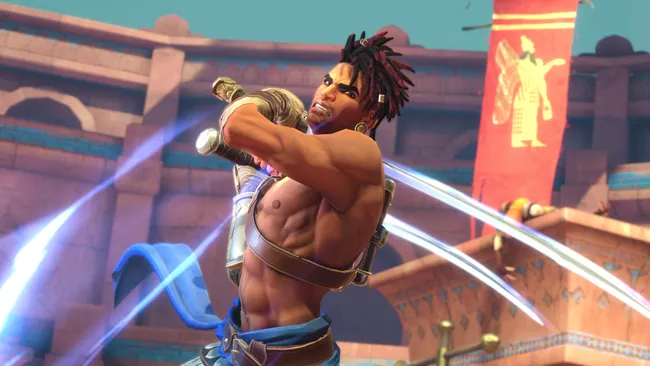Introduction:
This comprehensive Prince of Persia The Lost Crown review aims to guide gamers and fans alike in understanding the strengths and weaknesses of Prince of Persia: The Lost Crown, offering insights into its gameplay, narrative, and overall gaming experience.

In the realm of gaming nostalgia, Prince of Persia: The Lost Crown emerges as a beacon, rekindling the magic of classic Prince of Persia games while embracing the advancements of the modern era. This review delves into the game’s intricate blend of 2D Metroidvania design and the beloved elements that defined its predecessors.
Gameplay Dynamics:
The Lost Crown excels in key aspects that define a remarkable Prince of Persia experience – platforming and combat. Unlike its 3D predecessors, the game’s shift to a 2D perspective enhances control precision, offering a snappy and enjoyable experience. The combat system, akin to Sekiro: Shadows Die Twice meets Devil May Cry, introduces a focus on melee action, encouraging players to maintain combos and engage in swift, stylish battles.
Narrative and Characters:
This instalment takes a bold step by reimagining the series’ concept within Persian mythology. The narrative revolves around the Immortals, a group of heroic warriors, embarking on a mission to rescue the kidnapped prince. The protagonist, Sargon, adds depth to the tale with his personal struggles and agile combat prowess. However, the storyline occasionally falters in its delivery, creating some confusion and leaving certain plot elements unexplored.
Platforming Excellence:
The platforming gauntlet in The Lost Crown is consistently excellent, with a well-crafted map and challenging level design. While incorporating standard Metroidvania elements, the game introduces a unique approach to handling mistakes during platforming sections – instead of time-rewinding, players are returned to the last solid ground with a health penalty. This streamlined approach ensures that repeated attempts at challenging sections are quick and efficient.
Time Powers and Creativity:
The game introduces Time Powers, gradually expanding Sargon’s abilities. These powers impact platforming and contribute to the game’s combat system, creating a seamless integration of movement and action. The creativity in level design shines, especially in areas like the frozen sea battle, where time manipulation adds a captivating dimension to exploration.
Narrative Shortcomings:
Despite its strengths, The Lost Crown faces narrative challenges, with moments of confusion and unexplored time-related concepts. Some characters and side quests seem to vanish without resolution, leaving certain aspects of the story untold. The potential for a deeper exploration of the time-twisting theme remains, making the overall narrative somewhat unsatisfying.
Visuals and Voice Acting:
The game boasts a stylish and vibrant aesthetic, complemented by engaging combat animations. The boss battles, in particular, stand out with challenging mechanics and visually stunning sequences. While the main cast’s voice acting is strong, a minor character’s text-to-speech dialogue stands out as an oddity, though Ubisoft has acknowledged this as a temporary issue.
Conclusion and Verdict:
Prince of Persia: The Lost Crown successfully captures the essence of its predecessors while navigating the challenges of transitioning to a 2D Metroidvania framework. With a few narrative hiccups, the game delivers a satisfying experience through its dynamic combat, well-crafted platforming, and creative use of Time Powers. While it may not reach the heights of its predecessors, The Lost Crown proves to be a worthy successor, providing a blend of nostalgia and innovation for Prince of Persia fans.
